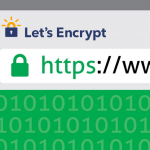
Posted on December 9th, 2015 by David Taplin
Email Marketing has gone full circle when it comes to its perception and effectiveness over the past decade.
It originated as a great way to push good looking, relevant messages via email to a targeted audience. But over time it was somewhat hijacked by spammers as well as unsolicited and unwanted emailers that created a lot of negative connotations when it came to email marketing solutions.
However, over the past few years it has regained its place alongside other favourable marketing channels as a very useful and potential opportunity gathering method of keeping potential customers informed and educated.
Email Marketing is basically being able to leverage the speed and convenience of email to communicate important messages, updates, tips and promotions to recipients that have opted in to receiving such messages, but what are the key steps required to ensure you achieve this effectively?
Here are our 5 top tips to send a compelling email campaign:
1. Clean Data
This is probably one of the most important points and it revolves around the data that you start with. By ‘data’ we mean the contact information and email addresses you have in place to send your email marketing to.
Rather than sending your emails out to random people in the hope that they will read it, it is much more effective to gather contacts over time via a system that allows them to ‘opt in’. Usually this can be achieved alongside other marketing channels or your website and should be aimed at people that are already warmed up to you slightly.
As you build your ‘clean database’, you will see incrementally desirable results as opposed to a hit and miss method.
2. Clear Objectives
Again, another important factor when it comes to your email marketing is the main reason you are sending it. This may seem like an obvious point, but it is surprising how many businesses send an email as a kneejerk reaction to a bit of news, an offer or just a random message.
The best way to look at it, is to start at the end and work back, so what are you ultimately trying to achieve with this email? What do you want the recipient to do as a result of receiving this email? Do you want them to contact you, buy an item, download a file, sign-up for an event? Is it just a way to keep your contacts informed of what you are doing? Is it to promote a new product or service? Or will it just become a regular ‘touch base’ style newsletter?
Having a set of crystal clear objectives in place will not only help you position the email correctly but it will give you a means to identify whether the email campaign has been a success or not.
3. Compelling Campaign
Once you have a clear set of objectives, this point will become a much easier task. To create a compelling campaign will not only keep the recipients interested in what you have to say, but it will prevent unsubscribes.
The email not only needs to be compelling, with great use of quality, interesting content, but the layout and good use of imagery will aid the message you are trying to convey. Remember, that even though the recipients may have opted in, they may still be extremely fickle when it comes to receiving email marketing, so ensure that you can get your message across quickly and succinctly making full use of the subject line of the email (as the hook) and the ‘above the fold’ segment of the email, meaning the top quadrant.
4. Track & Measure
Before you send your email it is essential you are able to track and measure its activity. We would recommend you use an email platform to send your email to not only ensure you are not black-listed, but to allow the platform to manage the tracking and reporting for you. Some great platforms on the market are the likes of MailChimp, iContact, Pure360 or Dotmailer.
5. Report & Refine
After you have sent the email campaign, you will want to ensure that you run regular reports on its performance to see what is going on in terms of recipient activity.
This report will need to contain vital statics that will help you ascertain how well your email has been received. For example:
• Number of Email Opens
• Number of Email Forwards
• Hot Prospects
• Number of Unsubscribes
• Most Active Recipients
• Most Clicked Links
• Number of Bounced Emails
Once you have a comprehensive set of statistics you will then be able to see what has worked and what hasn’t. This picture will become clearer the more emails you send and track, over time giving you a crystal clear idea on how to improve the effectiveness of your campaigns.
If you adopt our advice above then you will most definitely be able to reap the rewards of sending a well-planned and executed email marketing campaign.
If you would like to find out more about Email Marketing then please get in touch with My Hosting Bubble.







